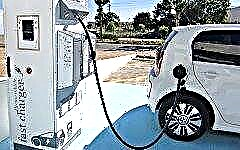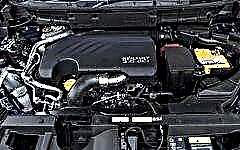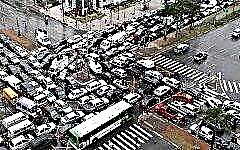
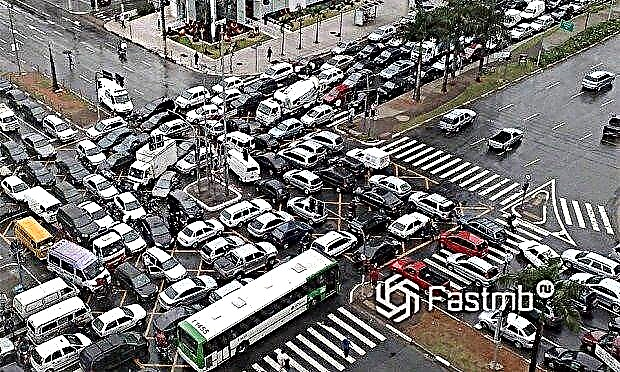
The content of the article:
- Moscow
- Samara
- Krasnoyarsk
- Ufa
- Voronezh
- St. Petersburg
- Ekaterinburg
- Novosibirsk
- Permian
- Nizhny Novgorod
The Google Maps service analyzed the traffic congestion on Russian roads and formed a rating of cities with the most colossal traffic jams - it looks like this:
1.Moscow
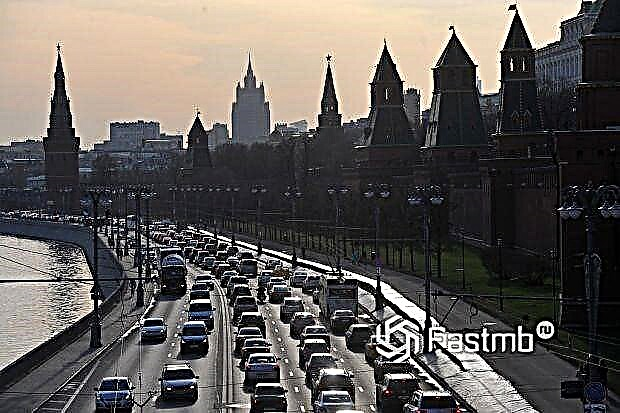
The leading line of the rating was taken by the capital, not only in Russia, but also in the list of 220 world cities. Drivers spend on average up to 210 hours a year or 9 days in Moscow congestion, moving at an average speed of 22 km / h.
In such a situation, motorists tend to blame urban improvement measures, in which sidewalks are widened into wide alleys, while the road is narrowed to two lanes.
Even when large-scale interchanges or take-off routes are built, either shopping centers or residential areas immediately sprout around them, which deprive the new road of efficiency.
2. Samara
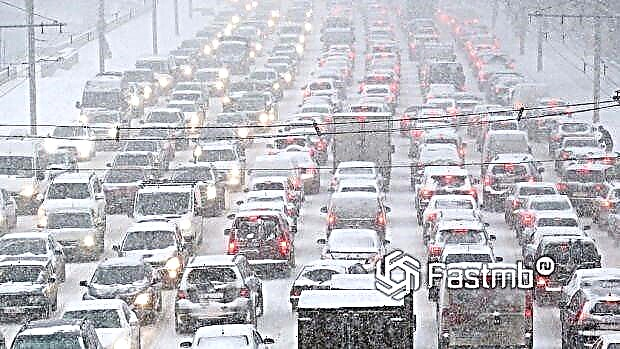
The famous metropolitan traffic jams are gradually moving to provincial cities, as evidenced by the practically stopped Samara.
The key reason is called disorganized development, when large-scale residential complexes are located in the city center, which is not designed for such a population density. New high-rise buildings do not provide enough parking spaces, forcing them to occupy the roadside.
The city roads themselves are not equipped with "pockets" at public transport stops, which leads to congestion during disembarkation and embarkation of passengers.
Among other problems of the city are narrow roads, lack of alternative routes and junctions, destruction of the roadbed.
3. Krasnoyarsk
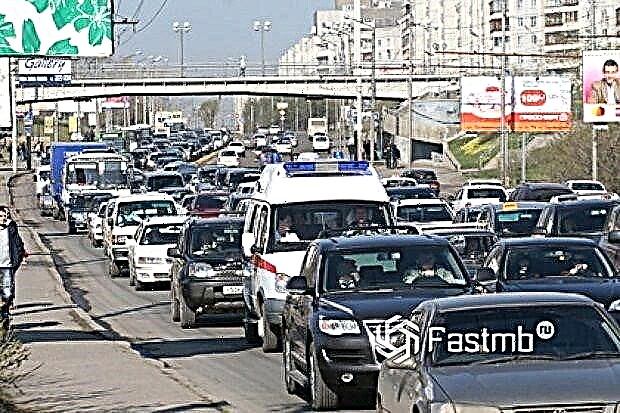
In the photo: a typical morning in Krasnoyarsk now starts with "traffic jams"
The residents of Krasnoyarsk call the congestion in their own city anomalous. According to the coordinator of the Federation of Car Owners Yegor Frolov, the city administration is to blame for traffic jams, which pays too little attention to road infrastructure.
Many roads have no markings, there is insufficient lighting, at least 70 sections are in urgent need of repair. In addition, due to widespread useless patching, traffic patterns change so often that drivers forget and confuse them, wasting time wandering around the city.
4. Ufa
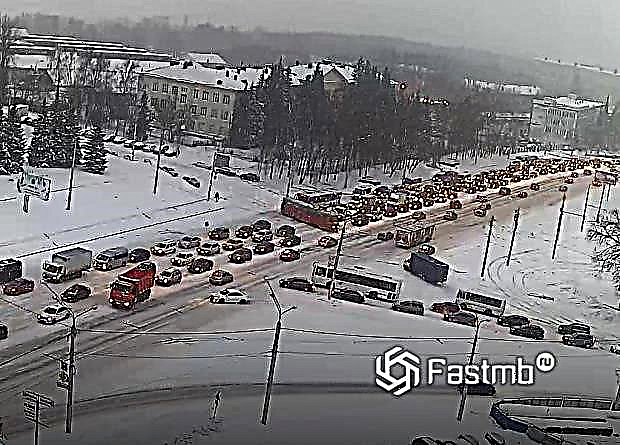
In the photo: Ufa suffers from 8-point traffic jams in the warm season and 10-point traffic jams in winter
According to experts, the city has too many road infrastructure problems to be resolved in the coming years. Among them - and the increase in the number of personal vehicles, which has exceeded a million units, and the lack of new roads and junctions that can relieve the city.
The local metro is developing at a slow pace, while a few extra stations would force citizens to abandon the car in favor of faster and more convenient transport.
Ufa did not avoid the traditional problem with parking, which is too few for the steadily growing number of vehicles.
The biggest problems arise in the winter, when the city is buried under a layer of snow, which special equipment cannot cope with. At the same time, accidents of different severity levels occur, creating additional congestion.
A third of motorists interviewed for the analysis of the traffic situation blame the climate and weather disasters for permanent traffic jams. However, one should not belittle the guilt of the local authorities, who are not able to organize traffic in such a way that the bus dropping off passengers does not paralyze all traffic along the narrow street.
5. Voronezh

Congestion in the city has become a normal phenomenon for local residents, so familiar that they often themselves contribute to their creation.
Thus, at the expense of private investors, several underground parking lots were organized, but Voronezh residents continue to leave cars on the street, reducing their capacity. The project includes a number of ground parking lots, but, as practice shows, they will not be in demand either.
There have been talks about the construction of road junctions for almost a decade, plans and drawings are periodically formed and announced, but the city always lacks funds for their implementation.
In addition, the situation is aggravated by developers of residential complexes and shopping centers, who do not think over either social or road infrastructure.
6. St. Petersburg
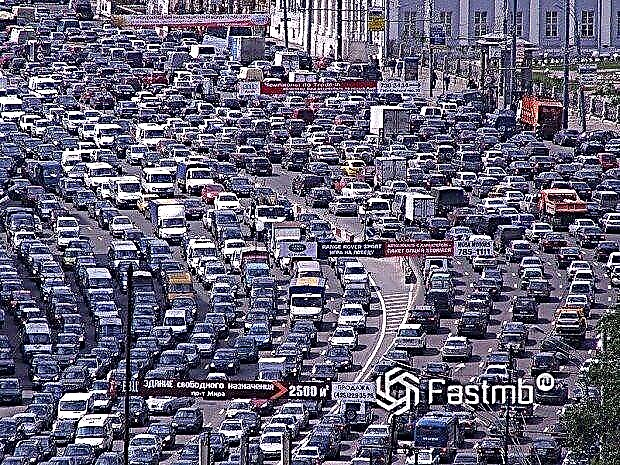
The northern capital managed to avoid road problems, but more and more interactive maps highlight streets in burgundy, signaling congestion.
The central region has always been distinguished by a competent transport infrastructure, including communication with other regions. But housing under construction and a variety of tourist facilities annually increase car flows, forcing car owners to turn the courtyards of residential buildings and even playgrounds into real parking lots.
The situation was aggravated by the ban on parking on Nevsky Prospekt, as a result of which cars flooded all nearby streets and even lawns, negatively affecting the environmental situation.
The interchanges of the Kalininsky district, where real collapses are observed during rush hours, cannot cope with the load.... The Petrogradsky District suffers from an endless flow of freight transport, and Krasnoselsky does not have a single metro station, so residents have only a ground-based way of travel.
7. Yekaterinburg
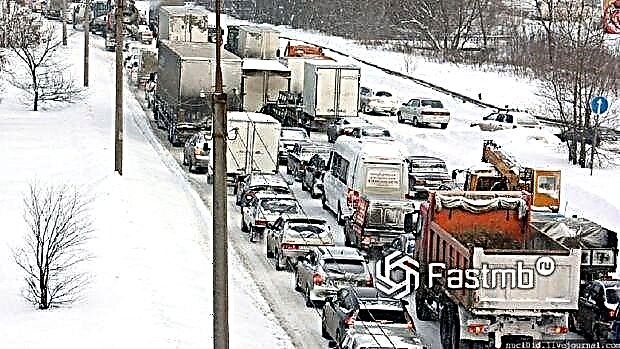
This city has been struggling with congestion for many years, but until now residents are forced to move at a speed of 5-6 km / h. With an annual registration of 20-25 thousand new cars, Yekaterinburg is unable to balance traffic flows with the still Soviet infrastructure.
Public transport is almost impossible to predict the timetable, and the metro is the smallest in the world. Thus, local citizens have virtually no alternative to personal transport.
Officials are trying to eliminate duplicate bus routes in order to unload roads, but due to the negative attitude of residents and the inconsistency of the actions of the mayor's office and the traffic police, the project has stalled.
A similar situation is observed with paid parking, for the organization of which the traffic police and the executive authorities will not create a database for calculating fines.
Despite the difficult situation in the city, experts believe that the construction of new roads will only increase congestion. The officials came to such a paradoxical conclusion that new high-quality roads will only increase the number of people willing to get behind the wheel.
8. Novosibirsk
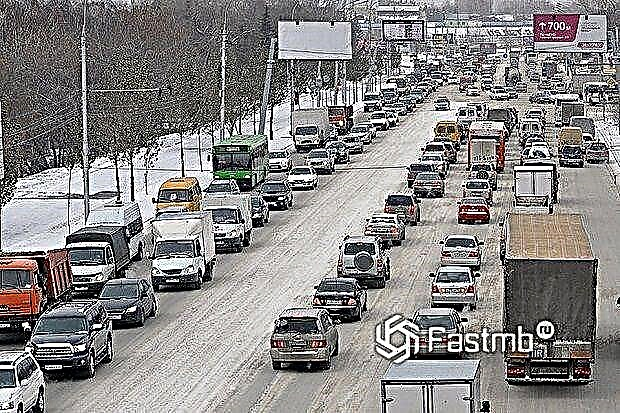
In the photo: Novosibirsk morning traffic jams reach 9-10 points
Why is Novosibirsk mired in traffic jams? Transport advisor Mikhail Nikulin believes that they are trying to solve the problem in fundamentally wrong ways. If the rest of the world community began to strictly regulate traffic and limit the ownership of cars, then in Russia they are trying to adapt the road network for a colossal amount of transport.
Novosibirsk is a northern city, and therefore requires a special approach to the organization of road infrastructure, which officials do not understand or do not want to understand.
For example, if standard asphalt roads are regularly plagued by the bizarre weather, then a larger track installation would be an ideal solution. And the dedicated lanes for urban transport, along which, bypassing prohibitions and without fear of fines, local drivers rush, it would be logical to replace with trams.
In the meantime, the mayor's office is introducing classical measures: it is trying to equip parking lots, expand roads, build interchanges.
9. Perm

Perm, too, every year more and more convinced that it is not "rubber".There are more and more cars for personal use, but urban development does not allow expanding roads or laying new ones.
Car owners themselves behave irresponsibly, who regularly leave their vehicles, wherever they hit, interfering with traffic. The traffic police every day reports on 40-50 evacuated cars, but even fines do not help, and the next day they are back in the same place.
The mayor's office is trying to think over two-level interchanges, to replace ground pedestrian crossings with underground or overground ones, but there are not enough funds for all these projects.
10. Nizhny Novgorod
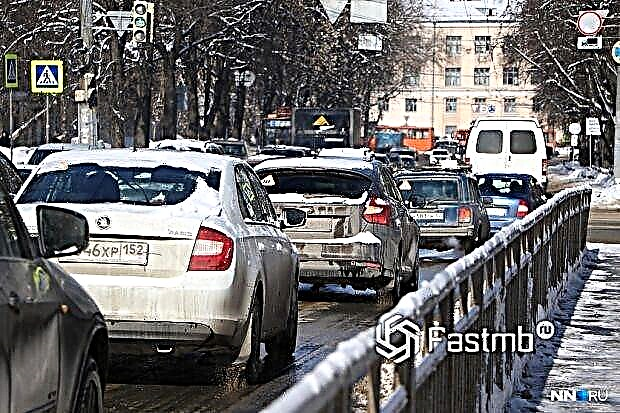
Nizhny Novgorod residents spend 126 hours a year in traffic jams, since their city was not ready to improve the well-being of its residents and a sharp increase in personal vehicles. The authorities, in turn, cannot find the means to equip a sufficient number of junctions or new highways, and one-time measures do not have the desired effect.
Conclusion
Urban development specialists have traditionally suggested that more attention be paid to the development of public transport, including providing dedicated lanes for it and ensuring a clear timetable. But such lanes should appear on all roads in order to really save the city from problems.
Drivers scold the authorities, the authorities - the drivers, and some experts are completely sure that traffic congestion is ineradicable.
Meanwhile, Singapore has managed to get rid of congestion entirely by making the car a luxury item, imposing draconian traffic fines and developing an ideal transportation infrastructure.
In Russia, an integrated approach is often replaced by targeted measures that add inconvenience to both pedestrians and motorists, but do not solve the problem of road congestion.





